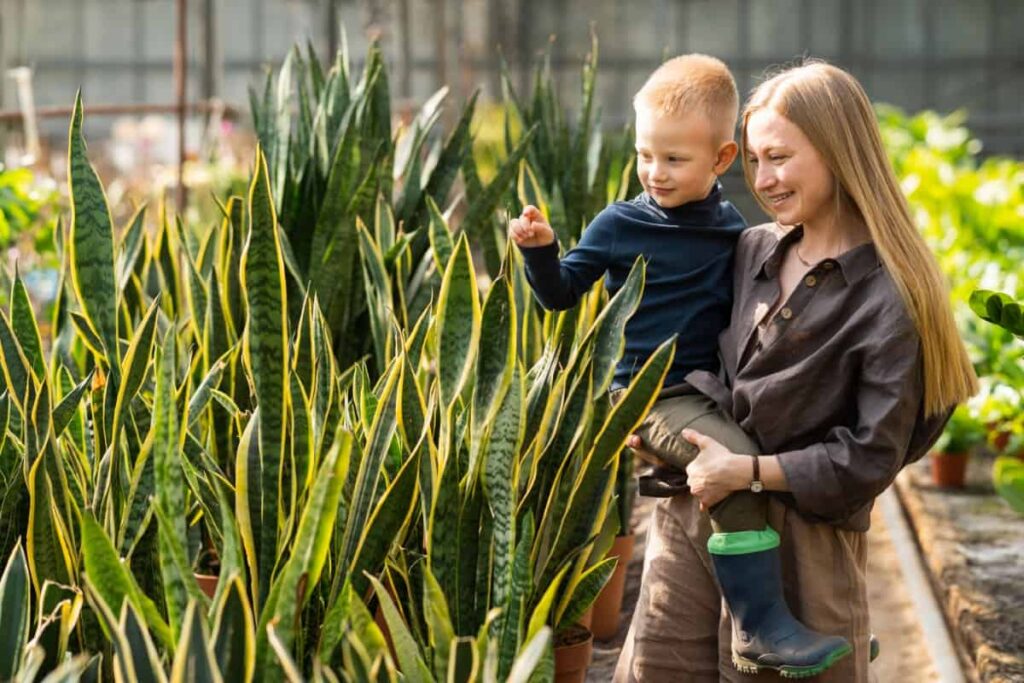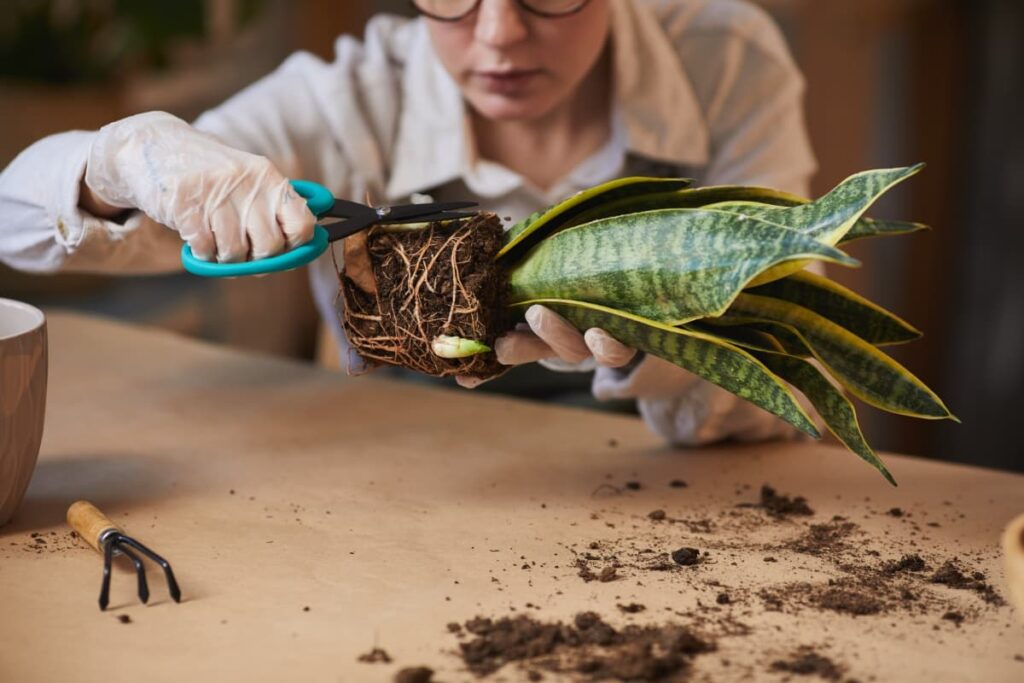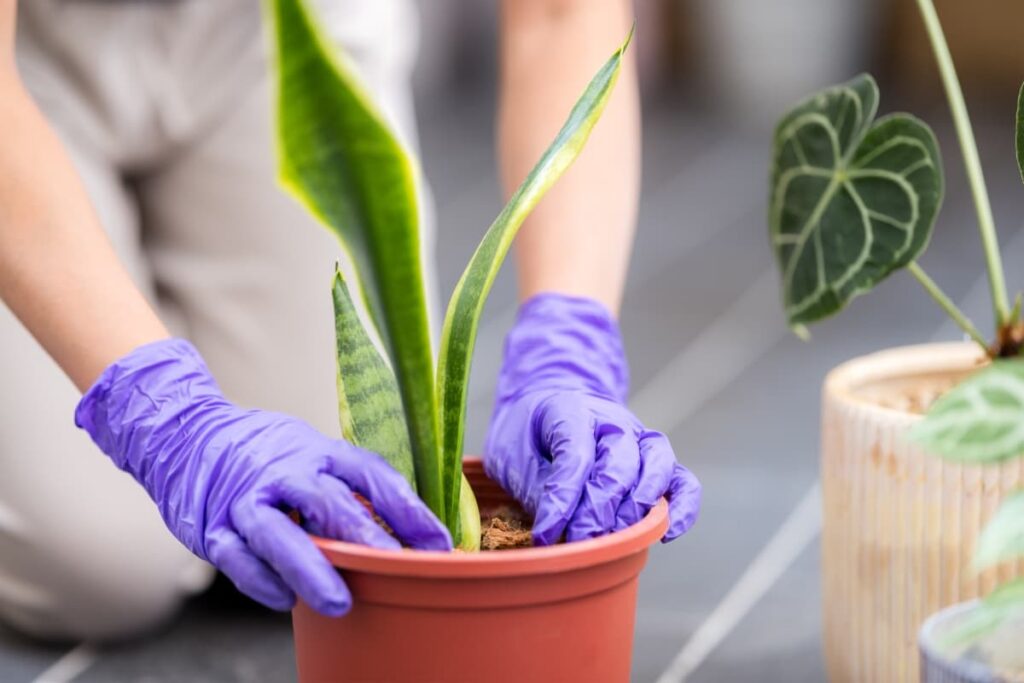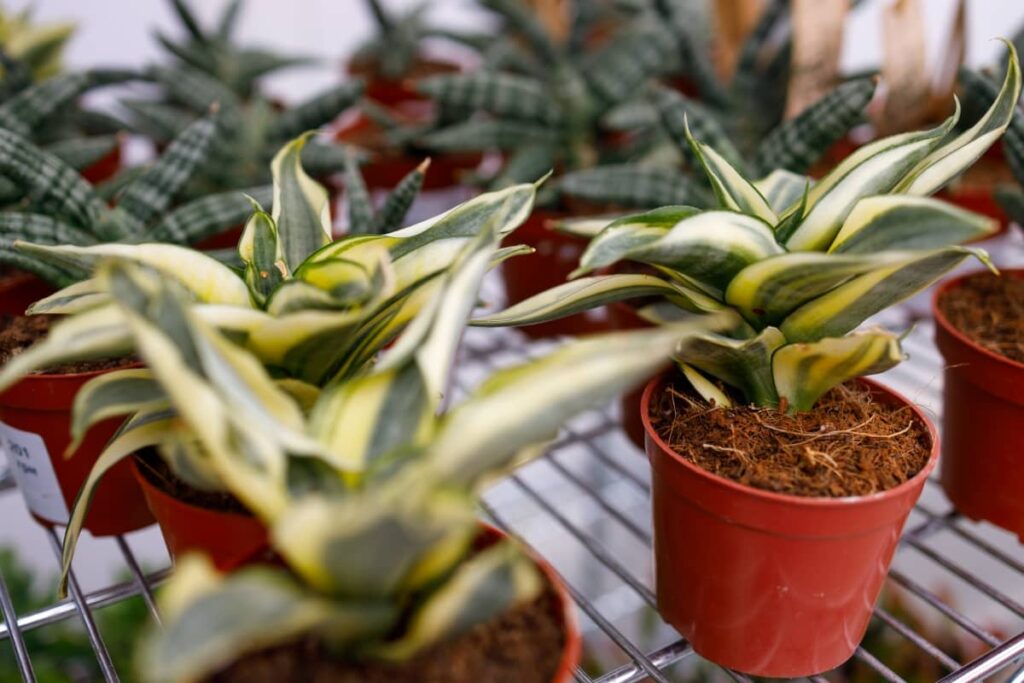These striking beauties, scientifically known as Dracaena trifasciata, have become a staple in homes and offices around the globe. Snake plant division is an essential technique for multiplying your plants and ensuring their overall health. By dividing the offsets or “pups” that grow from the base of the plant, you not only increase your collection but also promote better growth and vitality.

Snake Plant Division
Preparing the Snake Plant for Division
Start by selecting a healthy and mature Snake plant that has been growing well. Ensure that it is free from any pests or diseases. To make division easier, water your Snake plant a day or two before you plan to divide it. Next, gather all necessary tools, such as sharp and clean gardening shears or scissors, gloves to protect your hands, and small pots filled with well-draining soil mix.
Carefully remove the mother plant from its current pot while being mindful not to damage its roots. Shake off excess soil from the roots, but be careful not to break them. Inspect the base of the Snake plant for offsets or “pups.” These are smaller plants that have grown alongside the main one. Carefully separate them from each other using your hands or a sharp tool if needed.
Removing Offsets from the Snake Plant
To begin, carefully inspect the base of your Snake plant for any small shoots that have grown alongside it. These are the offsets that can be separated and potted individually. Gently loosen the soil around these pups with a small gardening tool or your fingers. Once you have identified an offset, use a sharp, clean knife or scissors to cut it away from the main plant. Be sure to keep as many roots intact as possible, as this will greatly increase its chances of successful transplantation. After removing all desired offsets, prepare separate pots filled with well-draining soil mix.
Potting the Snake Plant Offsets
Start by selecting pots that are slightly larger than the size of the offsets. This will allow room for their roots to spread out and establish themselves. Before potting, make sure your pots have drainage holes at the bottom. This is crucial for preventing waterlogged soil, which can lead to root rot. Fill each pot with a well-draining soil mix specifically formulated for succulents or cacti. Gently place each offset into its pot, ensuring that it is centered and upright.
In case you missed it: Snake Plant Care in Winter: Tips for Keeping Your Plant Healthy

Hold it in place as you add more soil around it, gently pressing down to secure it in place. Make sure not to bury the offset too deep; leave a little bit of its base exposed above the soil level. After potting, give each offset a thorough watering until excess water drains out of the bottom of the pots. Allow them to sit for a few days before watering again, as they need time to adjust and begin developing new roots. Place your newly potted Snake plant offsets in an area with bright indirect light.
Caring for the Newly Divided Snake Plant
- Light: Snake plants grow well in bright indirect light but can also tolerate low-light conditions. Place your newly potted divisions in a location that receives adequate sunlight throughout the day.
- Watering: Avoid overwatering the Snake plant, as this can lead to root rot. Remember, Snake plants prefer slightly drier conditions rather than constantly moist soil.
- Soil: Use a well-draining potting mix for growing Snake plants. This will prevent excessive moisture retention and help promote healthy root development.
- Temperature and Humidity: Snake plants are adaptable and grow well in temperature levels from 13°C to 29°C. Keep them away from extreme temperature fluctuations, which could stress the plant.
- Fertilizer: Feed your newly divided Snake plant with a balanced houseplant fertilizer during their active growing season (spring and summer), following package instructions for dosage.
Signs of a Successful Snake Plant Division
One of the first signs of success is when the newly divided Snake plant offsets start developing new growth. This is a positive indication that the plants have established roots and are ready to flourish independently. Look for fresh leaves sprouting from each offset as a promising sign of growth. Another sign to look out for is healthy root development. As the divisions adapt to their new pots, check if they’re producing white, firm roots. Healthy roots signify that the plants have successfully adapted and are absorbing nutrients effectively.
Common Challenges and Solutions for Snake Plant Division
One challenge is separating the offsets from the mother plant without damaging the roots. This can be tricky, but with patience and care, it can be done. Another challenge is ensuring that each offset has enough roots to survive on its own. Sometimes, the offsets may not have developed enough roots yet, or they may have become tangled with the mother plant’s roots. In these cases, gently untangling the roots or allowing them to grow further before division can help ensure success.
Pests can also pose a challenge during this process. Spider mites and mealybugs are common pests that can infest Snake plants if not properly taken care of. One solution for a successful Snake plant division is maintaining good overall plant health by providing regular fertilization and monitoring for any signs of disease or nutrient deficiencies.
Propagation Techniques for Snake Plant Offsets
- Water propagation – Place the offset in a glass of water, ensuring that at least half of it remains submerged. Change the water every few days to prevent stagnation. After a few weeks, plant roots will start to develop, indicating that it’s ready for potting.
- Soil propagation – Gently remove any excess soil from the offset’s roots before planting it directly into the well-draining soil mix. Ensure that you bury only the root portion and not too much of the leafy part.
In case you missed it: How to Propagate Snake Plants: A Step-by-Step Guide

Benefits of Regularly Dividing Snake Plants
Dividing Snake plants also promotes healthier growth. By separating offsets from the main plant, you’re giving each more space and resources to thrive. This helps prevent competition for nutrients and sunlight among the different parts of the plant. Another advantage is that divided Snake plants often produce stronger roots. The regular division also allows you to control the size of your Snake plant collection. If you have limited space but still want more greenery, dividing your existing plants is an excellent solution. You can maintain compact sizes while continuously expanding your indoor garden.
Snake Plant Division as a Sustainable Practice
Dividing Snake plants not only helps you multiply your plant collection but also promotes sustainability. By propagating the offsets and sharing them with others, you can contribute to greener spaces in your community. Snake plants are known for their air-purifying qualities, removing harmful toxins from indoor environments.
With division, you can meet this demand without relying solely on commercial production. Furthermore, by dividing Snake plants instead of purchasing new ones, you reduce waste and minimize your carbon footprint. The process requires minimal resources and allows existing plants to thrive while generating new growth opportunities.
Frequently Asked Questions (FAQ) on Snake Plant Division
When is the Best Time to Divide Snake Plants?
The ideal time for dividing Snake plants is during early summer or spring when they are actively growing. This ensures that both the mother plant and its divisions have enough time to establish themselves before winter arrives.
What Supplies Do I Need for Snake Plant Division?
To successfully divide your Snake plant, you’ll need a sharp knife or garden shears sterilized with rubbing alcohol, clean pots filled with well-draining soil mix, and water for watering newly divided plants.
How Do I Know if My Snake Plant Needs Dividing?
If your Snake plant’s roots are tightly packed, and there is little room for growth within its current pot, it’s likely time for division. Additionally, if the foliage appears crowded or stunted, it may benefit from being separated.
In case you missed it: How to Grow Snake Plants: A Guide to Planting and Care

Conclusion
Snake plants, with their long leaves and vibrant hues of green, are not only visually appealing but also incredibly adaptable. To successfully divide a Snake plant, it’s essential to remove the Snake plant offsets from the mother plant while ensuring you keep as many roots intact as possible. Gently separate them from their parent using a sharp and clean knife or scissors.
- Management Pests and Diseases in Your Cotton Field
- Sheep Farming Business Plan for Beginners
- Aquaponic Farming at Home: A Step-By-Step Guide
- Profitable Village Farming Business Ideas in 2024
- High-Yield Aquaculture: Fast-Growing Fish for Farming
- Effective Fish Pond Construction Techniques for Beginners
- Irrigation and Water Management in Pineapple Farming
- Blossom to Harvest: Mastering Flowering and Pollination in Papaya Farming
- Pig Fattening Essentials: From Selection to Sale for Beginners
